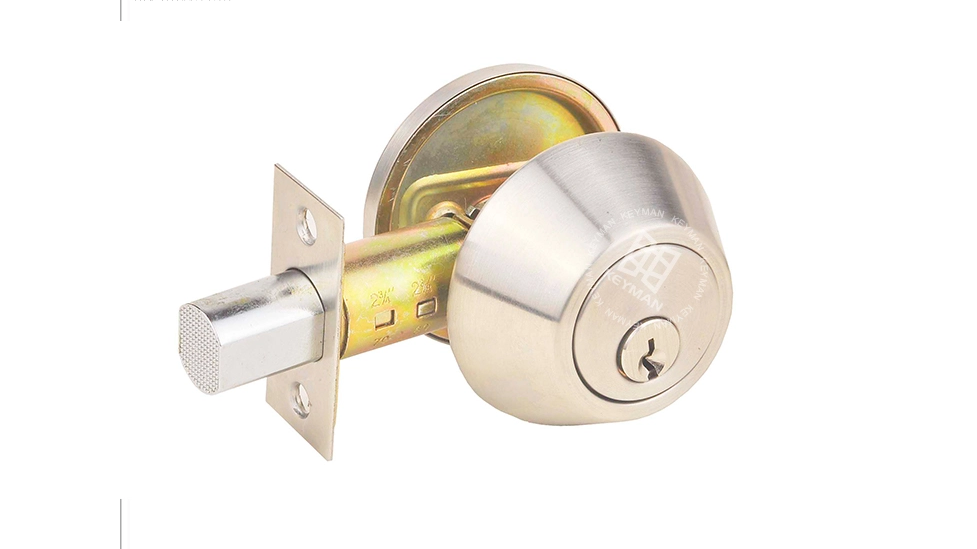Views: 0 Author: Site Editor Publish Time: 16-10-2025 Origin: Site











Getting the right measurements for a commercial door lock replacement can save you time, money, and frustration. Whether you're a facility manager, business owner, or locksmith, knowing how to accurately measure your existing hardware ensures you'll order the correct replacement parts every time.
Commercial door locks differ significantly from residential locks in both size and complexity. Standard residential measurements won't apply here, and even small measurement errors can result in costly returns or installation delays. This guide walks you through the essential measurements you need to take and the tools required to get them right.
By the end of this post, you'll have the confidence to measure any commercial door lock system accurately, understand the key dimensions that matter most, and know what information to provide when ordering replacement hardware.
Before you begin measuring, gather these tools to ensure accurate results:
· Tape measure (at least 12 feet long)
· Calipers for precise small measurements
· Ruler or straight edge
· Flashlight or phone light
· Paper and pen for recording measurements
· Camera to document the existing hardware
Having the right tools prevents measurement errors that could lead to ordering incorrect hardware. Calipers are particularly important for measuring cylinder dimensions and spacing between mounting holes.
Start by measuring the door thickness, as this determines which lock bodies will fit properly. Commercial doors typically range from 1¾ inches to 2¼ inches thick, but some specialty doors can be much thicker.
Measure at several points along the door edge to account for any warping or irregularities. Record the thickest measurement, as your lock must accommodate the maximum thickness.
The backset is the distance from the edge of the door to the center of the lock cylinder or handle. This is one of the most critical measurements for commercial door locks.
Standard commercial backsets are typically 2¾ inches or 5 inches, though custom backsets exist. Measure from the door edge to the exact center of the existing cylinder or handle spindle hole.
The cross bore is the large hole through the door face where the lock cylinder sits. Most commercial locks use either a 2⅛-inch or 1½-inch cross bore diameter.
The edge bore is the hole drilled into the door edge for the latch mechanism. Standard edge bore diameters are typically 1 inch or ⅞ inch for commercial applications.
Use calipers to measure these holes precisely, as even small variations can affect lock compatibility.
For cylindrical commercial door locks, focus on these measurements:
· Cross bore diameter and depth
· Edge bore diameter and depth
· Backset distance
· Door thickness
· Handle height from floor
Cylindrical locks are common in office buildings and require precise cross bore measurements for proper cylinder fit.
Mortise locks require more detailed measurements due to their complex installation:
· Mortise pocket dimensions (length, width, depth)
· Backset from door edge to lock centerline
· Distance between handle and deadbolt centers
· Faceplate dimensions
· Strike plate measurements
Measure the existing mortise pocket carefully, as these are custom-cut for each installation.
Exit devices have unique measurement requirements:
· Door width and height
· Distance from floor to panic bar
· Strike alignment with frame
· Vertical rod lengths (for multi-point systems)
· Mounting hole spacing
Document whether the device is rim-mounted, mortise-mounted, or surface vertical rod style.

Measure the strike plate's position relative to the door frame. Key measurements include:
· Distance from frame edge to strike center
· Strike plate length and width
· Mounting screw hole spacing
· Depth of strike box (if applicable)
Check if the frame has reinforcement plates or security modifications that might affect lock installation. Measure any existing reinforcement and note its position relative to the lock mechanism.
Measuring with the door closed: Always measure with the door fully open to access all hardware properly and avoid parallax errors.
Ignoring door sag: Older commercial doors may sag, affecting alignment. Check that the door hangs properly before taking measurements.
Forgetting about trim: Account for any decorative trim or plates that might affect the overall dimensions.
Using worn hardware as reference: If existing hardware is damaged or worn, measurements may be inaccurate. Look for original mounting holes or consult building plans if available.
Not documenting hand/swing direction: Note whether the door is left-hand or right-hand swing, as this affects hardware orientation.
Create a systematic record of all measurements using a standard format. Include:
· Door identification (room number, location)
· All dimensional measurements with units
· Hardware type and manufacturer (if visible)
· Photos of existing hardware from multiple angles
· Any special conditions or modifications noted
This documentation becomes invaluable when ordering replacement hardware or consulting with suppliers.
Some commercial door lock situations require professional assessment:
· High-security installations with complex access control integration
· Fire-rated doors where modifications could affect safety ratings
· Historical buildings with non-standard hardware
· Damaged frames that may need repair before new hardware installation
Professional locksmiths have specialized tools and experience with unusual commercial applications that might not be apparent to general maintenance staff.
Once you have accurate measurements, provide this information to your hardware supplier:
· Complete measurement documentation
· Photos of existing hardware
· Building type and security requirements
· Any relevant building codes or standards
· Timeline for installation
Quality suppliers can verify your measurements and suggest appropriate replacement options that meet both your dimensional requirements and security needs.
Accurate measurement is just the first step in successful commercial door lock replacement. Consider these factors for long-term success:
· Regular maintenance schedules to prevent premature hardware failure
· Documentation systems to track hardware specifications building-wide
· Vendor relationships with suppliers familiar with your building's hardware standards
· Staff training on basic measurement techniques for future needs
Taking the time to measure correctly initially saves significant time and expense throughout your building's operational life.
You can fill in the form below to ask us for more product information.